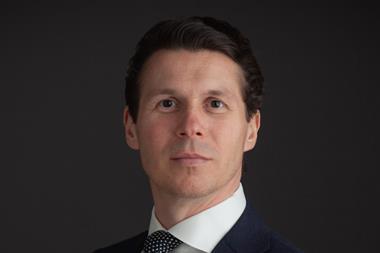Glenn Thomas says the key to recruiting and retaining good staff lies in creating a high quality benefits portfolio
Recruitment and retention of high calibre professional staff are among the main challenges facing HR managers in the twenty first century marketplace. No sector is exempt. While the drive to attract and keep the best in the business is paramount, there is intense pressure to implement innovative and cost effective measures which instill loyalty.
So how do mid-sized companies tackle this employment conundrum? More and more are opting to enhance their employee benefits portfolios. In today's volatile employment market it isn't enough to provide a gym membership and a performance bonus.
No business, regardless of size, can sustain a policy based on cash incentives alone. Employees know their worth and are willing to walk away from the negotiating table if the offer isn't good enough.
Compensation package
Firms need to think holistically to construct a complete compensation package with benefits that truly deliver employee satisfaction to attract and hold on to a high quality work force.
Bevan Brittan, a law firm with practices in London, Birmingham and Bristol, recently worked with the Jelf Group to determine how it could differentiate itself in a competitive marketplace.
Bevan Brittan director of human resources Diana Palmer explains: "We decided the key was to offer a relevant and meaningful employee benefits scheme. So we embarked on a project to overhaul our entire portfolio which would reflect the profile of the company - a dynamic, adaptive results driven law firm."
By adopting a consultative approach involving personnel from all levels, Jelf found out exactly what benefits colleagues would ideally like to have. From there Jelf developed a package which has a high perceived value and reflects the lifestyle of Jelf staff and attractive to prospective employees.
When speaking with clients about ways to review a company's benefits portfolio in order to deliver the most effective results, two areas must be considered: to put into practice benefits which have real, tangible value to colleagues and to use your size to leverage the most from the allocated budget.
There are many products available in the marketplace to suit all shapes, sizes and budgets but you must be able to identify a particular profile in order to achieve the stated objectives.
The most effective method of establishing what benefits would make the most impact on colleagues is by undertaking a comprehensive internal audit. The data gathered reveals the true picture of where you are as a company and benchmarks you in relation to the competition.
It can entail criteria including age, lifestyle, role within the organisation, opinion of the existing benefits package and employee perceptions of the company. The results greatly influence the provision of benefits.
Palmer explains: "One of the facts revealed from our audit was that the average age of our colleagues was 37. This meant that we had to tailor the benefits to tie in with their lifestyle arrangements to realise their full value.
"We singled out Pru Health for its emphasis on wellness and wellbeing which fits well with our corporate culture. The regular health screenings and focus on prevention appealed to our employees. We discovered that most people appreciated the peace of mind provided by private medical insurance and permanent health insurance - and this had tremendous value."
Pension scheme
The audit also uncovered that only 69% of employees took part in the existing pension plan. To change this and encourage more participation, the firm introduced a new pension scheme with a simple streamlined joining process.
Complemented by an awareness campaign including workshops, posters, use of the intranet and one-to-one counselling, the take-up rose to 95%.
The company also implemented a Bikes4You programme, childcare vouchers and a computer purchase scheme. By working with third party partners the firm has been able to respond to employee requests, which also happen to be tax effective.
Another step which made a huge difference to morale and loyalty was extending the benefits package to all employees. This included private medical insurance, an employee assistance programme (providing counselling and support services), income protection and a dental policy, all of which were previously reserved for senior managers.
Enhanced benefits deliver more than cash. The perceived value from this restructuring exercise itself has boosted the general feeling among employees. By involving colleagues in the decision making process from the beginning, they feel more engaged with the business and comprehend the associated costs, generating the view that the company is responsive and working in their best interest.
"We now have in place a robust and competitive benefits package which our colleagues respect," says Palmer.
"The aim is to gradually move toward a flexible benefits programme enabling employees to pick and choose benefits to suit particular circumstances. I am convinced the efforts of the last 12 months have paid off and we are already enjoying the rewards." IT
' Glenn Thomas is managing director of Jelf Corporate Consultancy, employee benefits specialists and part of the Jelf Group
Hosted by comedian and actor Tom Allen, 34 Gold, 23 Silver and 22 Bronze awards were handed out across an amazing 34 categories recognising brilliance and innovation right across the breadth of UK general insurance.













































